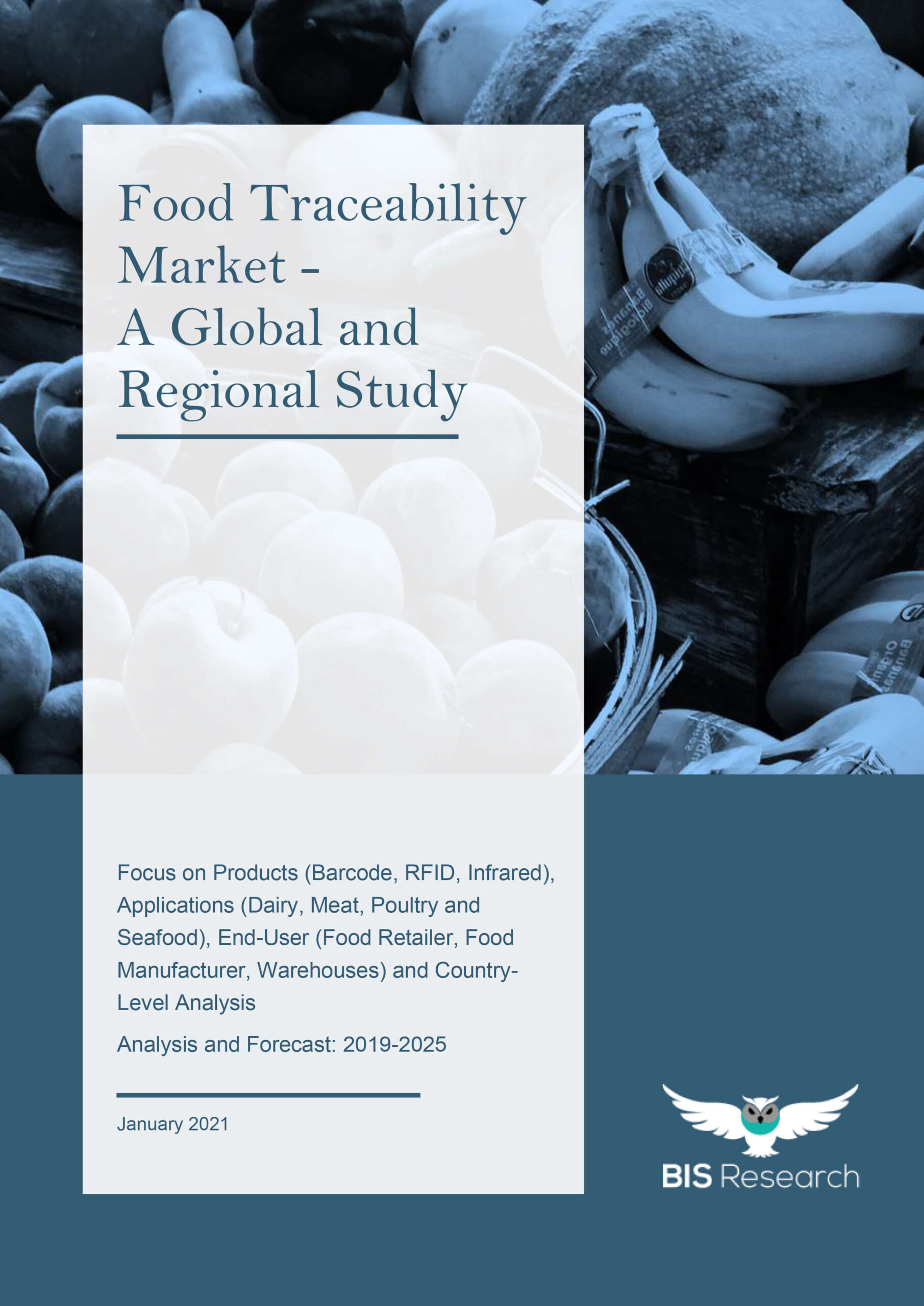Description
Market Report Coverage – Food Traceability
Market Segmentation
• Product Type – RFID, Barcodes, Infrared, Biometrics, Others
• Application – Dairy ProductsMeat, Poultry, and Seafood, Beverages, Fresh Produce, Others (Grains, Seeds, Nuts)
• End Users – Food Manufacturers, Food Retailers, Government Department, Warehouses, Others (Defense and Security Departments, Farmers, On-Profit Organizations, and Cooperative Organizations)
Regional Segmentation
• North America – U.S., Canada, and Mexico
• Europe – Germany, France, and Italy
• U.K.
• Asia-Pacific and Japan – Australia and New Zealand (ANZ), Japan, and India
• China
• Middle East and Africa- Saudi Arabia, Israel, Rest-of-Middle East and Africa
• South America- Brazil and Argentina
Growth Drivers
• Rising concerns toward food safety among consumers
• Increase in food products recalls and contamination cases
• Initiatives by regulatory bodies to improve food safety across countries
Market Challenges
• Lack of basic infrastructure in developing countries
• Difficulty in data collection and accuracy of information
• Cost requirements for traceability systems
Market Opportunities
• Technological advancements in the food traceability industry
• Growth opportunities in emerging markets
Key Food Traceability Companies Profiled
Honeywell International Inc, C.H. Robinson Inc, DuPont Nutrition and Biosciences, Bio-Rad Laboratories, IBM Corporation, Intertek Group, Cognex Corporation, and Zebra Technologies, among others
Key Questions Answered in this Report:
• What are the underlying structures resulting in the emerging trends within the global food traceability market?
• What are the estimations for the global food traceability market size in terms of revenue for the period 2019-2025? What is the expected compound annual growth rate (CAGR) during the forecast period 2020-2025?
• What are the expected outlook and revenue generated by the different types of product offerings, including RFID, barcode, infrared, biometrics, and others, for the period 2019-2025?
• What are the expected outlook and estimated revenue of different applications of good traceability systems, namely, dairy products, meat, poultry and seafood, beverages, fresh produce, and others, for the period 2019-2025?
• What are the expected outlook and estimated revenue of different end users, namely food manufacturers, food retailers, government department, warehouses, and others, for the period 2019-2025?
• What are the current market size, forecast, and regional market trends of the global food traceability market across different regions, namely North America, South America, the U.K., Europe, Asia-Pacific and Japan, China, and the Middle East and Africa?
• What are the major restraints inhibiting the growth of the global food traceability market?
• What kind of new growth strategies (mergers and acquisitions, partnerships, expansions, products, others) are being adopted by the existing market players to expand their market share in the industry?
• What is the impact of COVID-19 on the global food traceability market?
Market Overview
There has been an increase in the focus among companies in the food industry over the implementation of food traceability systems in their working. Due to the increasing food contamination cases, mass product recalls, and food adulteration incidents, the need of a traceability system for the safety and reliability of food is a must. With a hands-on traceability system where the consumer can check the farm-to-fork history of their product, the consumer’s trust can be achieved. Also, governments have made active contributions for the betterment of the food industry with laws and regulations that promote food traceability and make it mandatory in some areas. The food safety and traceability system is a solution to a number of problems in the food industry and is a must to achieve complete food safety.
Major driving factors for the global food traceability system industry over the years have been the increasing concern among consumers regarding the safety of their food. Several food adulteration incidents and recalls have added to the diminishing trust among consumers regarding their food’s safety. Key companies in the industry are actively incorporating tracking and tracing systems in their working, and companies like IBM Corporation have developed a food traceability software named IBM Food Trust, which is a big solution to major food industry companies.
Competitive Landscape
The competitive landscape of the global food traceability market consists of different strategies undertaken by major players across the industry to gain market presence. Some of the strategies adopted by food traceability software and hardware manufacturers are new product launches, business expansions, partnerships, and collaborations. Among all the strategies adopted, business expansions have been the most prominent strategy adopted by the food traceability product manufacturers. The competitive landscape provides an organization with the edge to understand its key business strategy in the industry, its current competitors, and potential future competitors that might have made their way into the market.
The global food traceability market is poised to grow over time, compelling companies to come up with collaborative strategies to sustain in the intensely competitive market. Companies with an identical product portfolio with a need for additional resources often partner and come together for joint venture programs, which help the companies gain access to one another’s resources and facilitates them to achieve their objectives faster. This strategy has been a widely adopted strategy by the players in this market. For instance, in December 2020, the United Nations Development Program partnered with the Singapore Monetary Authority to use blockchain technology to enhance product identification, traceability, and verification in agricultural and food supply chains.
Key players in the global food traceability market are coming up with different product launch activities to generate public awareness about their new and upcoming hardware and software traceability products. The product development and innovation have helped these companies to compete with the competitors’ product portfolio. This strategy has also been a widely adopted strategy by the players in this market. For instance, in December 2020, Ninjacart launched Footprint, a complete food traceability infrastructure that captures the end-to-end footprint traceability of fruits and vegetables.



Reviews
There are no reviews yet.